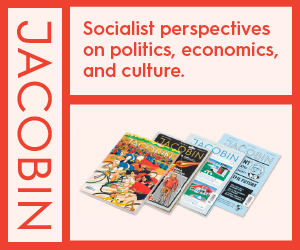-
Peru: Blood Flows in the Amazon
In early June, Peruvian President Alan García, an ally of US President Barack Obama, ordered armored personnel carriers, helicopter gun-ships and hundreds of heavily armed troops to assault and disperse a peaceful, legal protest organized by members of Peru’s Amazonian indigenous communities protesting the entry of foreign multinational mining companies on their traditional homelands. Dozens of Indians were killed or are missing, scores have been injured and arrested and a number of Peruvian police, held hostage by the indigenous protestors were killed in the assault. President García declared martial law in the region in order to enforce his unilateral and unconstitutional fiat granting of mining exploitation rights to foreign companies, which infringed on the integrity of traditional Amazonian indigenous communal lands.
-
EL SALVADOR: THE BEGINNING OF A NEW ERA
On Monday, June 1, 2009 El Salvador will turn a new page in its history with the inauguration of the country´s first left government, joining the ranks of the majority of Latin America. Representing the FMLN (Farabundo Marti para la Liberacion Nacional), Mauricio Funes and Salvador Sanchez Ceren, president and vice-president elect, will face a national assembly where the FMLN is outnumbered by more than 2:1. Out of a total of 84 seats, the FMLN only have 35. This will make broad sweeping changes difficult, but not impossible, and may force Funes to use the power of the presidential veto as a bargaining chip. It is important that those of us observing from a distance understand the complicated environment within which the new government will be operating.
-

Cuba Si!
For fifty years progressives, socialists and radicals from around the world have looked to Cuba as the place in which socialism might actually both survive and blossom in its magnificent possibilities. For this reason, Cuba also has to meet higher moral standards. We expect more from its revolutionary leaders because they (especially Fidel) have promised more. And they have delivered remarkably in health, education, social welfare and the blossoming of the arts and sciences.
-

The Chávez Code
Golinger gives a passionate and meticulous presentation of a few recent years, which historians may one day see as the pivotal period of Latin American history – a time when U.S. power throughout the hemisphere began to crack and when Canadians have many concerns about “deep integration” with the U.S.
-

Barrick’s Gold
The website of Canadian mining multinational Barrick says its vision is “to be the world’s best gold mining company by finding, acquiring, developing and producing quality reserves in a safe, profitable and socially responsible manner.”
Although no one would deny the profitability of the company’s operations, Barrick’s major new project in South America has activists, ecologists and residents questioning its claims of safety and social responsibility.
-

Digging Up Canadian Dirt in Colombia
Up a flight of stairs, behind double-enforced bulletproof glass and a large, silent bodyguard sits the office of Francisco Ramirez, a mining-policy researcher and president of a small Colombian trade union.
Mining policy really isn’t sexy stuff and researching it usually isn’t a dangerous occupation, but some of Mr. Ramirez’s conclusions can mean life or death literally and figuratively. “Once they tried to kill me right here in this office,” said the researcher, who has survived seven assassination attempts.
-

Cuba after Castro
Unlike most Latin Americans, Cubans enjoy substantive rights. Despite the constant refrain, “no es facil,” Cubans don’t work as hard as their neighbours, nor do they suffer anxieties that they’ll have no access to health care or go homeless. Cuba’s transition team of experienced Communists can strengthen socialist institutions by opening up discussion on key decisions to its educated population.
-

Leonilda Zurita: Growing Coca in a Fight for Survival in Bolivia
For centuries, coca has been used as a medicine in the Andes to relieve hunger, fatigue and sickness. Many Bolivians chew the small green leaf or drink it in tea on a daily basis. Much of the coca produced in Bolivia goes to this legal, controlled use. But the leaf is also a key ingredient in cocaine. The U.S. government has focused on coca eradication as a way to stem the flow of cocaine to the U.S. This war on drugs in Bolivia has resulted in violence, death, torture and trauma for the poor farmers who grow coca to survive. The U.S. government has directly funded this war, often facilitating human-rights violations and acting as a roadblock to peace in Bolivia. And the billions of dollars that Washington has pumped into this conflict have not diminished the amount of cocaine on the streets in the U.S.
-

Justice for Immigrant Workers!
“All other sources of labour having been exhausted, the migrants were the last resource.” So reads the text accompanying the 1940-41 Migration series of paintings by Jacob Lawrence on display at New York’s Museum of Modern Art. More than 60 years later, the demand for migrant labour remains Canada’s “last resource” in efforts to maintain economic growth, although the overall context has shifted somewhat.
-

Latino Mercenaries for Bush
n the faculty dining room at the California State University where I teach, a Mexican-American woman places the thin slice of turkey on the bread to make my sandwich. The stress lines that radiate down from her high cheekbones twitch as she tells me politely that she’s fine. One of her sons is in Afghanistan, she reports. The other will leave tomorrow for Iraq. “I pray every day,” she says, smearing the mayonnaise on the other slice of bread.



